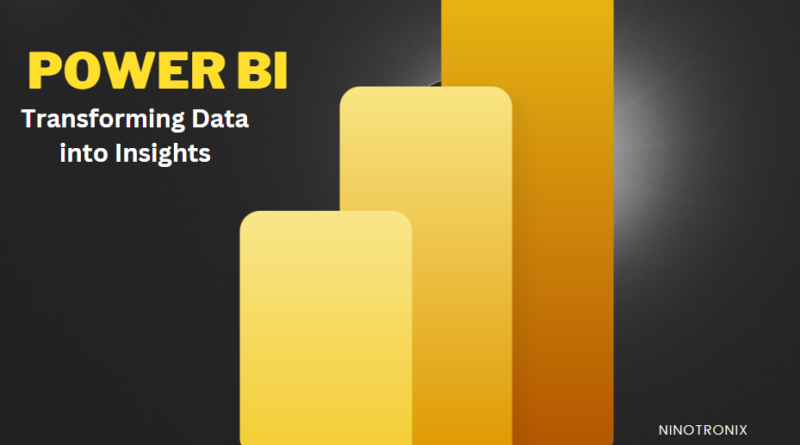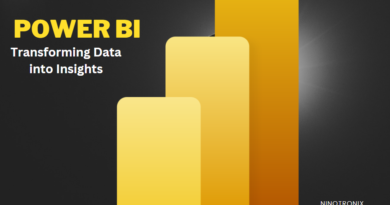Data Transformation and Modeling using Power BI
Table of Contents
In the realm of data analytics and business intelligence, the journey from raw data to valuable insights is a meticulous process. Microsoft Power BI, a robust and versatile tool, empowers users to engage in data transformation and modeling, unearthing hidden patterns and trends that drive strategic decisions. In this article, we delve into the fundamental concepts and practices of data transformation and modeling using Power BI.


Data Transformation: From Raw to Refined
Data transformation is the pivotal first step in harnessing the potential of data. It involves cleaning, structuring, and enriching raw data to make it suitable for analysis. Power BI offers a comprehensive suite of tools to facilitate this process:
1. Data Source Connection: Power BI connects to a multitude of data sources, including databases, spreadsheets, cloud services, and APIs. This connectivity allows users to extract data seamlessly.
2. Power Query: Your Data Shaping Ally: Power Query is a powerful ETL (Extract, Transform, Load) tool within Power BI. It empowers users to cleanse data by removing duplicates, handling missing values, and transforming data types. Furthermore, it allows the merging of multiple data sources, ensuring a consolidated dataset for analysis.
3. Data Cleaning and Transformation: With Power Query’s intuitive interface, users can reshape data by pivoting, unpivoting, and aggregating it. This ensures that the data is structured in a way that facilitates meaningful analysis.
4. Data Enrichment: Power Query enables users to augment data with additional information from external sources. This might involve fetching currency exchange rates, geolocation data, or integrating data from online databases.
Data Modeling: Crafting the Analytical Framework
Effective data modeling is the backbone of insightful analysis. It involves creating relationships between tables, defining calculations, and structuring the data for optimal performance:
1. Power Pivot: For Robust Data Models: Power Pivot, an in-memory data modeling engine, enables users to establish relationships between tables. This is crucial for creating a cohesive data model that accurately reflects the underlying business processes.
2. Data Modeling Language (DAX): Unleashing Analytical Power: The Data Analysis Expressions (DAX) language is the heart of Power BI’s calculation engine. It empowers users to craft custom calculations, measures, and calculated columns. This allows for the creation of complex metrics tailored to specific business needs.
3. Hierarchies and Aggregations: Power BI’s data modeling capabilities extend to the creation of hierarchies and aggregations. These hierarchies enable users to navigate through data at different levels of granularity, enhancing the depth of analysis.
4. Performance Optimization: Effective data modeling isn’t solely about relationships and calculations. It also involves optimizing performance by applying techniques such as data summarization and partitioning. These strategies ensure that dashboards and reports deliver swift responses, even with large datasets.
Crafting Interactive Insights: The Synergy of Transformation and Modeling
The true power of Power BI emerges when data transformation and modeling harmonize to create interactive insights:
1. Dashboard Design and Visualization: After data transformation and modeling, the enriched and structured data is visualized through engaging charts, graphs, and tables in Power BI Desktop. This visual representation allows users to grasp information swiftly and intuitively.
2. Interactivity and Exploration: Power BI’s interactive capabilities shine as users explore the data. They can apply filters, slicers, and drill-through actions, unveiling diverse perspectives and insights within the same dataset.
3. Data-Driven Decision-Making: The ultimate goal of data transformation and modeling is to facilitate informed decision-making. Power BI equips users with the ability to generate insights that drive business strategies, optimize operations, and seize opportunities.
Conclusion: Empowering Insights with Power BI
In the dynamic landscape of data analytics, data transformation and modeling play a pivotal role in converting raw data into actionable insights. Microsoft Power BI, with its array of tools and functionalities, empowers users to navigate this journey seamlessly. By leveraging Power Query’s data transformation capabilities and Power Pivot’s advanced data modeling features, users can unlock the full potential of their data, fostering a data-driven culture that fuels innovation and success. As businesses continue to harness the power of data, Power BI remains an indispensable companion on the path to uncovering valuable insights.


